
On Wednesday, India and Australia play the first of three T20s against each other. While India seem relatively settled, Australia is a team in disarray. This has been the case since the ball-tampering incident back in March.
Australia's form has suffered across all formats since then, with T20's being no exception. Australia have lost their last four T20Is, with their most recent win being against the United Arab Emirates.
The T20 format has rarely been Australia's best. They are yet to win the T20 World Cup and have often seemed to undervalue the format. This has been shown through the lack of T20Is Australia has at times played, but also through the teams that have been selected for these games.
Australia have in part continued this trend by resting some key players for the series, but in recent times they have started to respect the format more, and have subsequently been more consistent in their selections.
There is also a healthy amount of raw talent in the Australian squad. While it remains a far cry from the Indian Premier League, the growth of the Big Bash has certainly helped T20 cricket in Australia.
Players like D'Arcy Short, Billy Stanlake, and Andrew Tye have gone from being fringe players for their state sides to stars for their Big Bash teams, and have helped bring Australian cricket out of the past, where T20 cricket is seen as a second or even third rate format.
The culmination of the unrest around Australian cricket and the talent flowing from the Big Bash leaves the Australian side looking like the T20 equivalent to Frankenstein's Monster.
In their team they have the potential to threaten India. However, they also have weaknesses that the Indian team could exploit to devastating effect, causing further embarrassment for the already red-faced Australians.
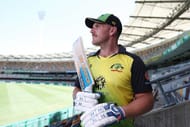
Strength: Top-Order Power
Since their bans, Australia have certainly missed the runs Steve Smith and David Warner contributed to the side.
However while the teams they have fielded in Test and one day cricket since the duo's departure have certainly exposed a lack of batting depth, in the games shortest format Australia actually have a wealth of talent.
This talent is spearheaded by Aaron Finch, the team's captain. While he is now capped in all three formats, and has recently also been named the captain of the one day side, there is no doubting T20 is Finch's strongest format.
Finch's averages 36.30 with a strike-rate of 143.71 in domestic T20s, and has an even better record in international games, holding the top two highest individual scores on T20Is.
But Finch also has support. D'Arcy Short's past 12 months in domestic cricket have taken him seen him rise from someone who seldom made the Western Australia side, to one of the most feared short form batters in the country.
Not only did Short top the run-scorers chart in last seasons Big Bash, but he also broke the Australia list A record in September this year when he blasted 257 against Queensland.
Chris Lynn is another threat at the top of Australia's batting order. However, despite Lynn's fantastic domestic form, he is yet to adapt to international cricket and is yet to reach fifty in 17 innings for his country.
It's a credit to Lynn that he was chosen to be Finch's opening partner in Australia's most recent T20, despite Glenn Maxwell, Alex Carey and Short all providing healthy alternatives, but there are other, less reassuring, factors that may contribute to this.
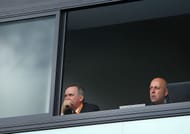
Weakness: Indecisive Selections
Selectors are always easy to blame, but the Australian selectors have at times made it particularly easy.
For many years Australian cricket as a whole has devalued the T20 format. This was at its most apparent in 2017 when it was announced the Australian side would partake in T20 games in New Zealand after the Test side had already left to tour India.
T20 cricket often seemed to be an afterthought for the selectors. They would rest the country's best players and experiment with players who seemed to be picked on hunches more than anything else. Then comes a World Cup and they would seem to panic, throwing together squads that had no experience playing together.
There has been a more concerted effort to ensure continuity in the last year or so, but Australia still face India with Nathan Lyon, Mitchell Starc and Mitchell Marsh, all being rested.
Furthermore, certain players have simply slipped through the cracks. It is an injustice that the Big Bash's all-time leading run-scorer, Michael Klinger, and all-time leading wicket-taker, Ben Laughlin, only ever played three games each for the national side.
It is a further indictment on the selector's that Michael Beer, a short form specialist with a T20 economy of just 6.49, only ever played for Australia in test cricket. This anomaly is perhaps even stranger than if Chris Rogers had only ever played T20 cricket for Australia.
These scatter-gun selections mixed with Australia not playing many T20 Internationals, in general, has left Australia with a side very light on experience.
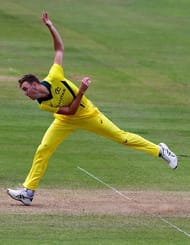
Strength: Bowling Options
Australia's bowling line-up is very diverse, which is particularly useful in the T20 format where batsmen thrive on repetition.
Consider the two bowlers who opened up in the lone T20 against South Africa. Firstly, there is Billy Stanlake, who is 204 centimetres tall, and occasionally reaches over 150kph, but sometimes bowls a bit erratically. Then there is Jason Behrendorff, the left arm bowler who relies more on swing and accuracy than raw pace.
Nathan Coulter-Nile and Andrew Tye, whose variations make him diverse enough in his own right, make up the pace attack. But Australia's spin options are no less varied.
While Ashton Agar and Adam Zampa where both left out of the game against South Africa, they provide two drastically different spin options.
Zampa is an aggressive leg-spinner who searches for wickets, not dissimilar to Adil Rashid. While Agar provides a more conservative option with his left-arm orthodox.
Add in the part-time options of Glenn Maxwell, an off-spinner, and D'Arcy Short, a left-arm wrist-spin bowler, and Australia have all four types of spin covered.
These options not only mean that Finch can tailor his strategy to certain batters throughout a match, but also that the selectors have a range of options if the series starts poorly. This may indeed be needed, as, despite these options, not one of Australia's bowlers will feel they are guaranteed a place in the opening match, let alone in three.
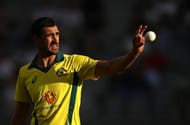
Weakness: No 'Elite' Bowler
While Australia's peculiar re-branding in Perth may have suggested the team valued "elite honesty," they do not seem to value elite bowlers in T20 cricket.
This is highlighted by Mitchell Starc, who is unquestionably Australia's best T20 bowler, being rested for the series.
While Australia's bowling options may be varied, they don't have any one player they can turn to in key moments.
Australia would no doubt love someone like Jasprit Bumrah or Bhuvneshwar Kumar to lead the attack, but instead their most experienced bowler, Coulter-Nile, has been bowling first-change.
Furthermore, Adam Zampa, who arguably has the most impressive record of any of the bowlers in Australia's squad, didn't play in the game against South Africa and is still battling to win the selectors faith.
While Australia have talent among their bowlers, it is easy to envisage Finch scratching his head and wondering who to throw the ball to if Rohit Sharma or Virat Kohli begin to flourish.
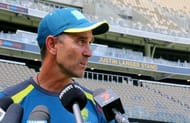
One final factor that should be considered, but that is unclear whether it will be a strength or a weakness, is the attitude of the Australian public towards the cricket team.
Australia's three ODIs and one T20 against South Africa were the first games on home soil since the ball-tampering incident. Furthermore, this year has seen the shorter formats shift from free-to-air to pay TV. As a result, the general interest in the Australian cricket team is not as high as in years gone by.
While cricket is comfortably India's most loved sport, in Australia is simply one of many sports vying for the public's attention.
In recent times, when Australian cricket has been in the limelight, it has been for reasons that are predominantly negative. Yet the lessened attention may actually aid the less experienced players in the side, and help them play their natural games as they would in a Big Bash match.
If the likes of Lynn, Short, Behrendorff and Carey are able to do this, Australia may be able to reignite the interest of the nation in the side ahead of the Test series. However, against quality opposition, this will be a challenging task.
Follow IPL Auction 2025 Live Updates, News & Biddings at Sportskeeda. Get the fastest updates on Mega-Auction and cricket news
